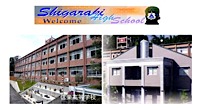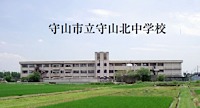Author: Shigehiko
Tsukahara, born in Shiga, Japan, earned a B.S. majoring in Applied Chemistry
from Okayama University of Science.
After 10 years of teaching science (7-12) in public schools in Shiga
prefecture, Shigehiko came to the U.S. to attend graduate school where he received an
M.A.E. (Chemistry Education) from Northern Michigan University, and did doctoral studies in science education at Georgia State University.
Since
1947, the Course of Study, a national guideline, has ruled Japanese education
K-12. It is referred to as “6-3-3
system” of the years of elementary, junior high, and senior high schools, with
first nine years compulsory. The
Course of Study is revised about every 10 years, and the latest revision was
done in 1998 and 1999. It became
effective for all students grades 1-9 in 2002, and high school freshmen in 2003
and on.
Textbooks
used in grades 1-12 are written based on the national guideline and Monbusho’s
(Ministry of Education, Science, Sports and Culture) authorizations are
required. Several publishers are
providing textbooks for each grade and subject. Selection of the textbooks is done by the intermediate
school district at public elementary and junior high schools. The government
pays the expense of the textbooks at grades 1-9, but other supplies such as
workbooks are charged to parents.
At high schools, each school selects textbooks. Because the textbooks are the
possessions of students, they are soft-covered, relatively inexpensive and
lightweight compared to those in the U.S.
Currently Japanese
children start to study science in the third grade. In 1992, the first and
second grades science and social studies were abolished and the new subject,
“Life environmental studies” was born.
The elementary science covers three areas: (1) Living things and their
lives, (2) Matter and energy, and (3) The Earth and universe.[i] These three areas first appeared in the
Course of Study in 1968 when Japan had been influenced from several science
projects developed in the U.S.
The 7-9 science
curriculum is organized into two fields; one corresponds to physics and
chemistry, and the second to biology and Earth science. This basic concept has
not changed since it was introduced in 1958. The junior high school science
curriculum has seven main items in each field. It is required to be taught in this order during three
years, but not specified at which grade.[ii]
Approximately
70 percent of Japanese students advanced to college-bound high schools and the
other 30 percent go to schools that provide vocational courses.[iii] Students are required to take at least
two science courses among the selective courses provided at their school.
If
you visit science laboratories in Japanese schools, you will notice the
similarity of each lab, which are equipped with the same technology. This is
because of the science education promotion law, which regulates the standards
of teaching aids, and supports its expense by national treasury. Designed and
promulgated as early as 1953, its purpose is to assure the opportunities of
science education for every student.
Each science teacher keeps the lab neat and comfortable, which is rich
in equipment.
One
of the characteristics of elementary science is the school science garden. It is necessary for pursuing the scope
of living things and their lives, and the Earth and universe. Each grade grows and observes annual
plants in this garden for science class.
Since Japanese school year starts in early April and ends in late March,
they can experience seeding to fruition seamlessly. Science gardens especially play an important role in urban
areas where children seldom touch nature.
Because
their ordinal teaching licenses never expire, Japanese teachers do not have to
go back to college to maintain their certificates. Instead, there are in-service training courses provided by
each prefecture’s board of education.
Some of the training is mandatory, but many science teachers participate
in the optional study groups offered by boards of education or private
organizations. For example, based
on the original at the national science museum in Tokyo, a chemistry teacher
proposed to his study group to make a periodic table display with real element
samples for each school’s lab.
Although some elements are missing due to them being prohibited for
general usage by law, the displays are very impressive, and attract students’
attention at participating high schools’ labs in Shiga prefecture. One regretful thing is that this kind
of practice sharing is usually only at the local level and is rarely introduced
nationwide.
[i] Monbusho (Ministry of Education, Science, Sports and Culture). Shogakko—gakushu shido yoryo (Tokyo: Okurasho Insatsu Kyoku, 1998).
[ii] Ibid.
[iii] Monbusho, Statistical Abstract of Education, Science, Sports and Culture. 2000 edition. (Tokyo: Okurasho Insatsu Kyoku, 2000), pp.52-53

